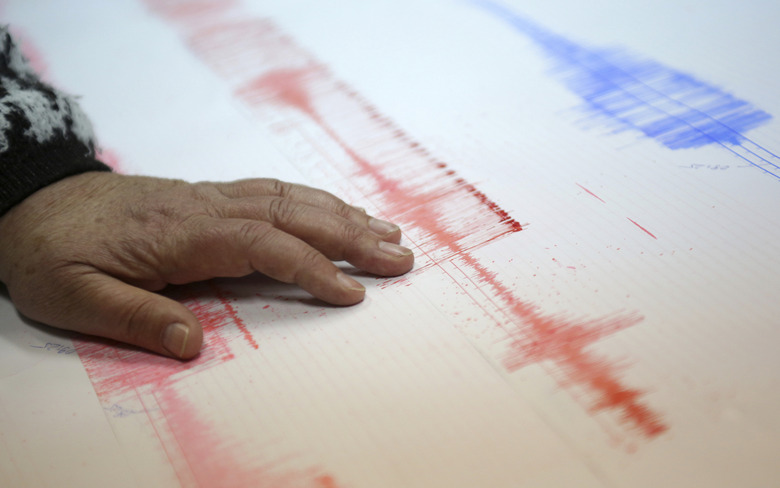Why Is An Earthquake Constructive?
Newspaper headlines seldom read, "Catastrophic earthquake brings happiness and well-being to all." Instead, you often hear about toppling buildings, raging fires and devastating tsunamis. Yet, even in the midst of smoldering ruins, nature repeatedly transforms bits of calamity into pieces of triumph by using earthquakes for constructive purposes.
Faults, Plates and Quakes: The Earth in Motion
Faults, Plates and Quakes: The Earth in Motion
Earthquakes pose a threat to more than 70 million Americans in 39 states. When a major earthquake begins, shaking and ground displacement may follow when high-energy seismic waves move through the ground. Although volcanoes and other events trigger quakes, most occur along tectonic plate boundaries where faults form. A fault, such as San Andreas Fault in California, is a crack or series of cracks between massive blocks of rock. This same tectonic plate motion also causes volcano eruptions and continental drift, the process that causes land masses to move slowly.
Instant Tourist Attractions
Instant Tourist Attractions
The Earth has several layers, but the only one fragile enough to fracture during an earthquake is the lithosphere. That's the layer that contains tectonic plates. Earthquakes can be so powerful that they reshape the landscape in surprisingly novel ways. For example, a lake just south of New Madrid, Missouri, was formed in 1912 thanks to an earthquake. The hole it created filled with water, creating an exquisite lake that attracts tourists today. Hot springs can also form as a result of earthquakes.
Land Where There Was None
Land Where There Was None
Faults have the ability to create important geological entities called rift valleys. Rift valleys are block-fault graben surrounded by horst mountains. A horst is a section of ground that's moved up to an altitude higher than the graben. Grabens are collapsed or down-dropped rock surrounded on their longest sides by faults.
If you love scenic cliffs, it's possible that an earthquake created one of your favorites. A cliff can form in a location where quakes happen frequently. Earthquake activity may also lead to the formation of land masses at sea. For instance, NASA satellite photos taken in 2013 reveal a new island created after a 7.7-magnitude earthquake ravaged Pakistan. The island formed offshore even though the actual quake occurred around 380 kilometers (230 miles) away from the shore inland. Scientists believe that the island rises up to 20 meters (70 feet) from the water line and has a width of up to 90 meters (300 feet). Its surface consists of rock, sand and mud.
Indirect Earthquake Benefits
Indirect Earthquake Benefits
Earthquakes can be constructive in other ways besides creating new land masses. Scientists, for example, cannot study Earth's interior directly, but geologists can by analyzing the way seismic waves move below ground. That's possible because these waves behave differently as they travel through materials of different densities and rigidities, and this gives scientists clues about the makeup of different layers of the planet. Special scientific stations around the world record seismic data to help geologists learn about the planet's interior.
Cite This Article
MLA
Lee, Kevin. "Why Is An Earthquake Constructive?" sciencing.com, https://www.sciencing.com/earthquake-constructive-10011261/. 24 April 2017.
APA
Lee, Kevin. (2017, April 24). Why Is An Earthquake Constructive?. sciencing.com. Retrieved from https://www.sciencing.com/earthquake-constructive-10011261/
Chicago
Lee, Kevin. Why Is An Earthquake Constructive? last modified March 24, 2022. https://www.sciencing.com/earthquake-constructive-10011261/
